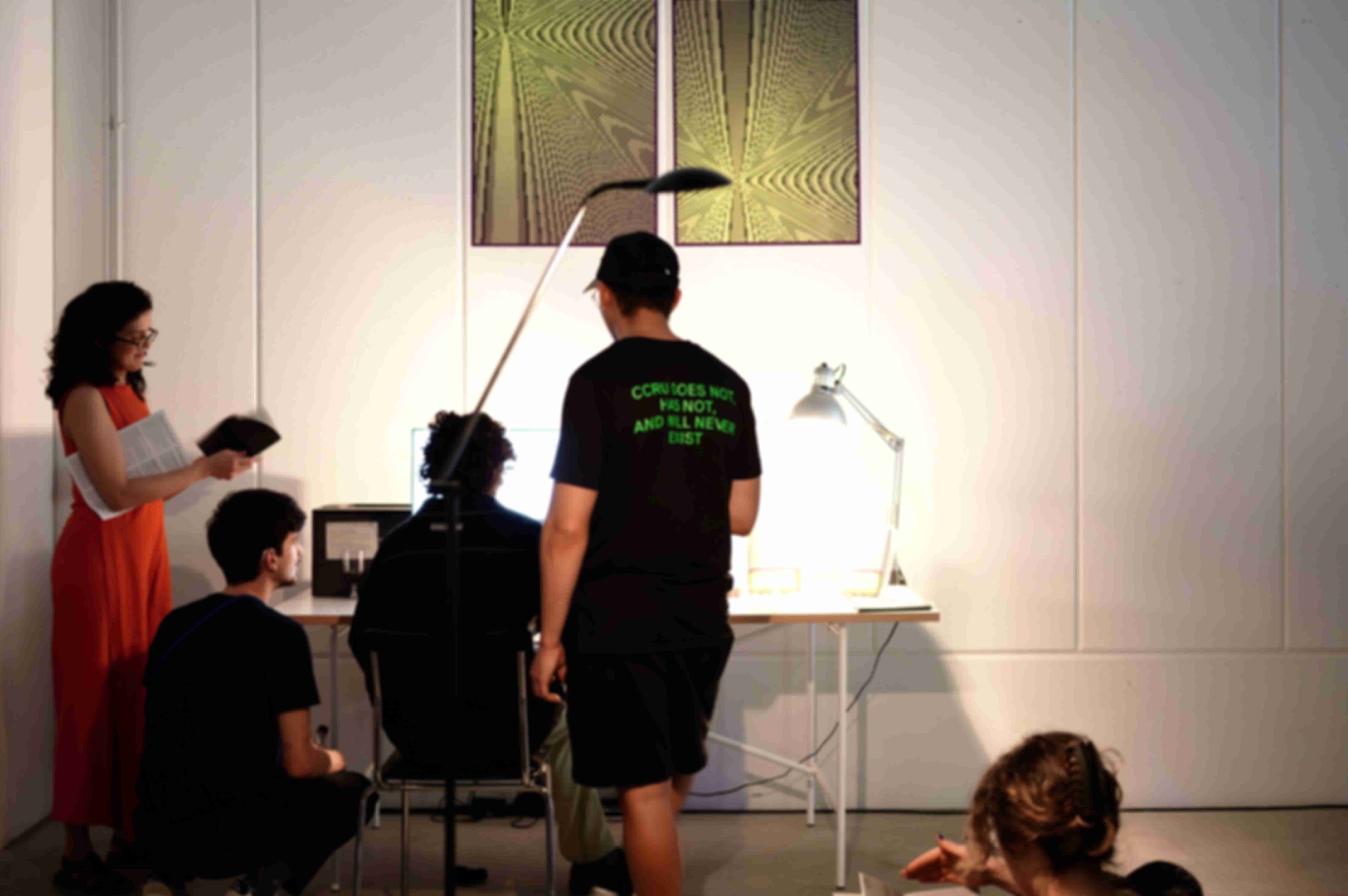Francesco
Scheffczyk





Creative Pattern Recognition
Creative Pattern Recognition is a hybrid publication that explores the intersection of artificial intelligence and creative practices. The publication covers a wide range of topics such as the role of AI in art and design addressing the impact and potential on the creative process. It also highlights the opportunities and challenges presented by AI tools and how creative practices evolve through them. It examines the ethical considerations surrounding AI, including the impact on jobs in the creative field and the importance of demystifying AI to address societal concerns. Through interviews, reflections and analytical pieces, Creative Pattern Recognition provides a comprehensive, situated overview of the current landscape of AI in creative practices, creating a time capsule that captures the contemporary discourse.
Concept
The publication was born out of the question of why creatives should even bother working with emerging technologies such as artificial intelligence. By curating different creatives from different backgrounds, the publication tries to give an answer. By reflecting and analysing artistic practices, the publication becomes a good starting point for aspiring artists and creatives who want to work with artificial intelligence. Not in the sense on how to apply this technology, but rather what position creatives can take and what philosophical ideas creatives can apply to create meaningful works.
The publication exists in a hybrid form. This means that it exists as both a website and a printed publication. Using web-to-print technology, the print version is created based on the web version. As web technology was not designed to create print layouts, there is friction and perhaps even errors in the layout. This friction, caused by the transfer of the publication from digital to physical, represents the friction between human creativity and artificial creativity, between human intelligence and artificial intelligence.
In addition, AI plays a critical role in the editorial decisions made within the publication. Given the current overuse of chat interfaces as the main way to interact with generative AI, the publication exists as a chat interface. By making the publication accessible to an AI model, it will be able to curate the content of the publication based on search queries of the reader. Using a technology called Retrieval-Augmented Generation (RAG), the model can index and "understand" the publication and navigate the reader.
Technical Implementation
The frontend of the web publication was implemented using Nuxt 3, a meta framework for Vue 3. It contains an index page with several ways to start a chat, either by clicking on an article or by clicking on the "Start chat" button.
After starting a chat and reading articles, it is possible to print your individual chat as a book. To convert the website into a printable PDF, a library called pagedjs is used. Alternatively, it is also possible to print the entire publication with a curated chat. It can be printed from the index page by clicking on the "Print Publication" button.
For the RAG pipeline the API provided by Cohere is used for its embedding and LLM capabilities, as it works particularly well for RAG use cases. The embedding space that is created through the API is stored in a Weaviate vector database because of its powerful querying capabilities.
Curational process
A list of 34 creatives has been curated to showcase innovative, interesting and alternative approaches to artificial intelligence. The list was curated to be as diverse as possible in terms of age, nationality, gender, professional background and more.
In the end the following 10 creatives contributed to the publication:
- Tom White
- Paul Eßer
- oio
- Gianpaolo Tucci
- Matthias Grund
- Fabian Mosele
- Jumoke Fernandez
- Trudy Painter
- Shariar Assadi
- Max Lambrecht
Thank you once again for your trust. It was a pleasure to have worked with you! ✌️
Exhibitions & Presentations
The publication was already presented during the following events:
2025: The Future is Now? – Exploration Strategies from Artists on AI, Fundación Ludwig de Cuba, Havana, Cuba
2024: Hidden Layers: AI & Design Conference 2024, KISD, Cologne, Germany
2024: What whill be there in the end? – Exhbition of the Master Projects 2024, Digital Media, University of Arts Bremen, Germany